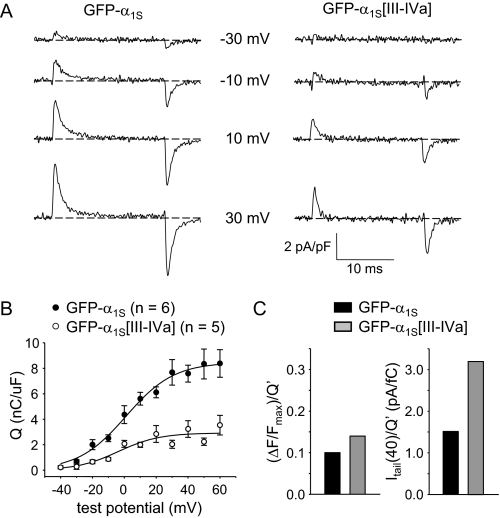FIGURE 4.
GFP-α1S[III-IVa] releases Ca2+ as efficiently as GFP-α1S but has a higher l-type channel open probability (Po). A, recordings of immobilization-resistant charge movements elicited by 20-ms depolarizations from -50 mV to the indicated test potentials are shown for dysgenic myotubes expressing GFP-α1S or GFP-α1S[III-IVa]. B, comparison of Q-V relationships. Charge movements were evoked at 0.1 Hz by test potentials ranging from -40 mV through +60 mV in 10-mV increments, following a prepulse protocol (11). The smooth curves are plotted according to Equation 3, with best fit parameters presented in Table 2. C, (ΔF/F)max/Q′ and Itail(40)/Q′ (left and right, respectively) for GFP-α1S and GFP-α1S[III-IVa]. Q′ represents the charge attributable to heterologously expressed DHPRs in the membrane and was calculated as Qmax - Qdys (Table 2). The values for (ΔF/F)max are from Table 1. The values for Itail(40) are given in the text and Table 2.

